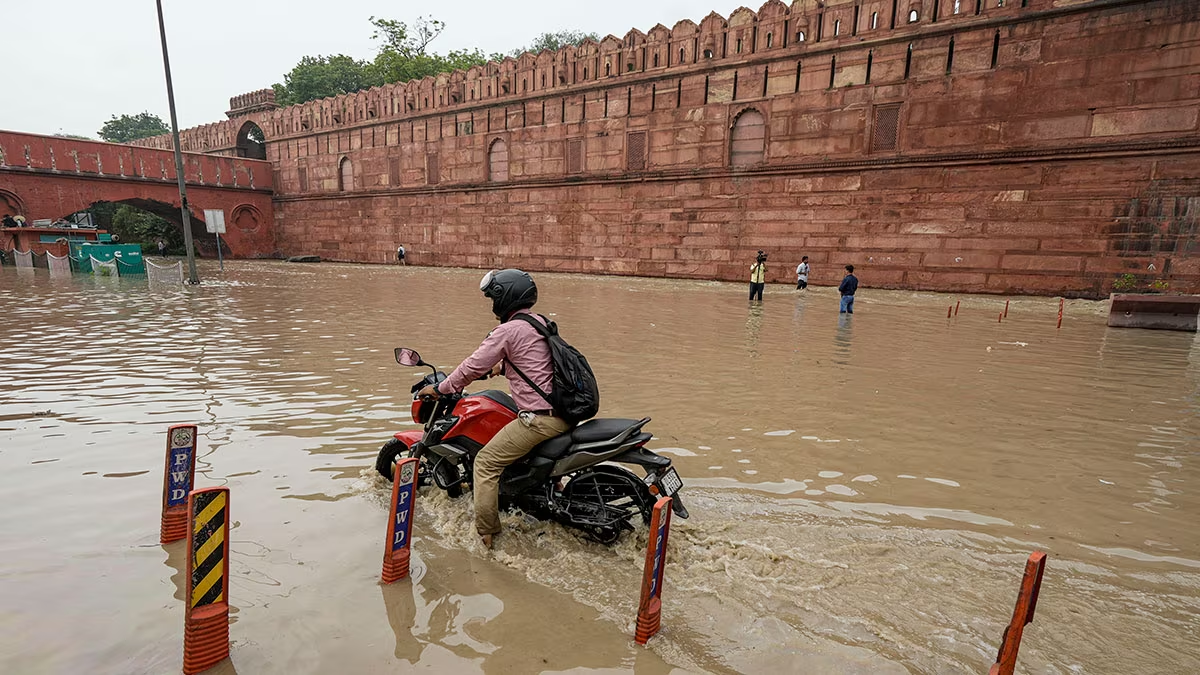Key Findings:
Flood situation near Yamuna River, a lifeline for Delhi, often turns into a formidable challenge during the monsoon season. The current flood situation near the Yamuna River in Delhi is a cause of concern as water levels continue to rise, bringing back memories of previous floods that wreaked havoc on the city. This article explores the key developments in the ongoing situation, the government’s response, and the lessons learned from past incidents.
Rising Water Levels: A Steady Threat:
As of August 13, 2024, the water level in the Yamuna River has been steadily rising. The Central Water Commission (CWC) reported that the river’s level was at 204.35 meters at 9 AM, just 0.15 meters below the warning mark of 204.50 meters. By 5 PM, the water level is expected to reach 204.90 meters, surpassing the warning level but remaining below the danger mark of 205.33 meters.
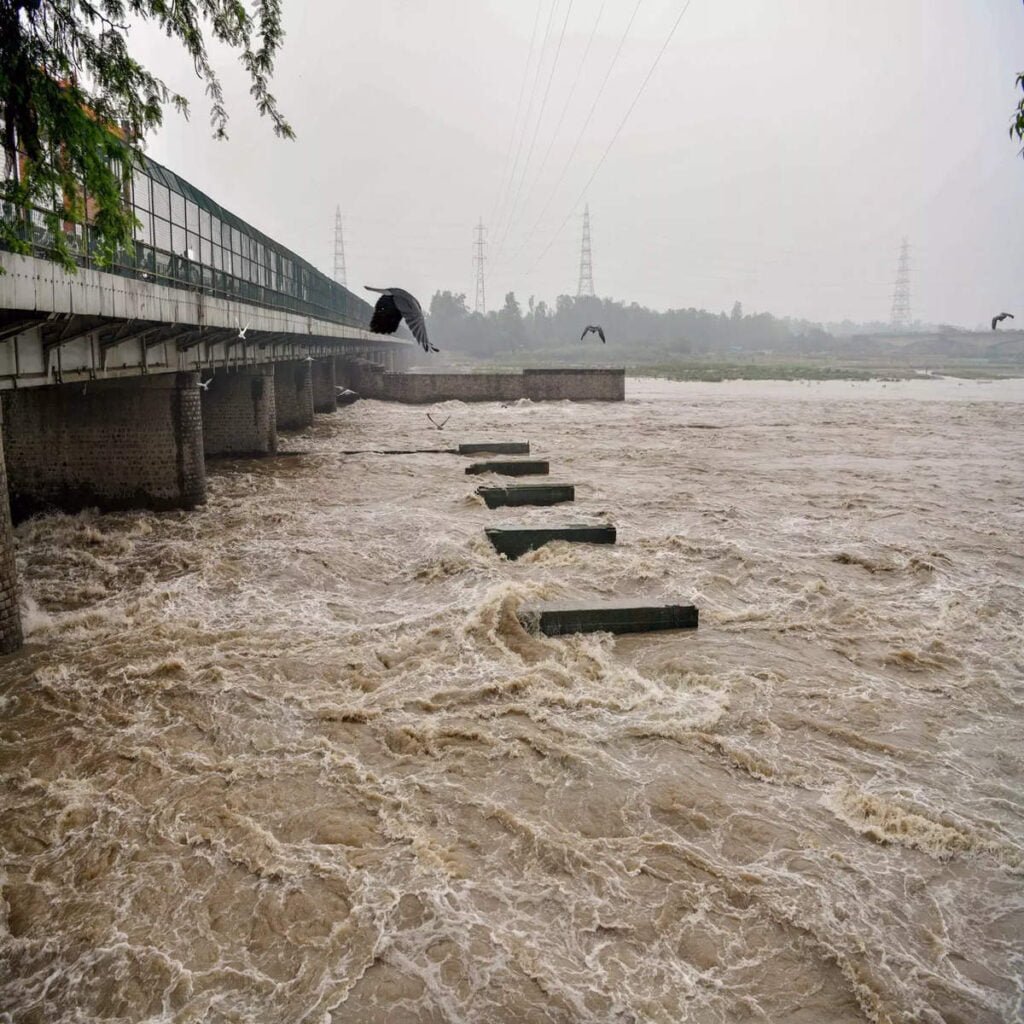
This steady rise in water levels has prompted authorities to issue warnings and urge residents near the riverbanks to remain vigilant. Although the situation is under control for now, the potential for flooding cannot be ignored, especially given the river’s history of sudden surges.
Government Response: Preparedness and Precautionary Measures:
In response to the rising water levels, Delhi’s Irrigation and Flood Control Minister, Saurabh Bharadwaj, has taken proactive steps to ensure that the city is prepared for any eventualities. The minister reviewed flood control preparations at the Boat Club near Metcalf House, emphasizing that both the Revenue and Irrigation departments are on high alert.
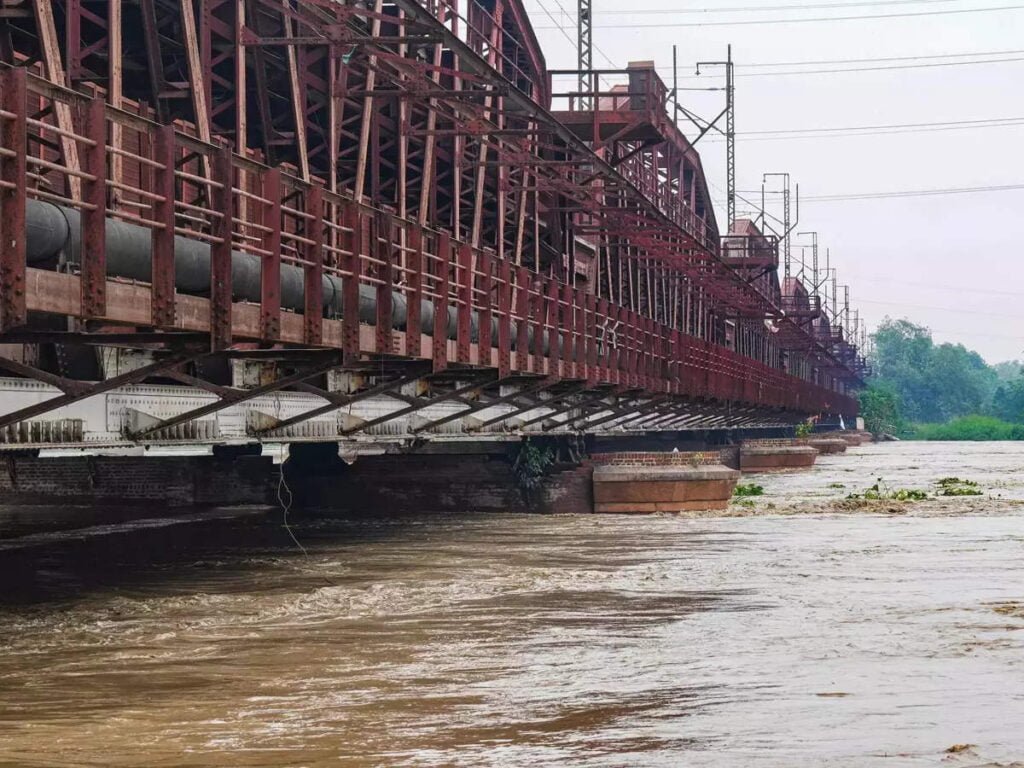
Bharadwaj assured the public that his department is fully equipped to handle flood-related issues, with arrangements made for boats and rescue operations if needed. The removal of obstructions in the river’s flow, such as the jammed gates of the ITO barrage, has also been prioritized to facilitate the smooth passage of water.
Historical Context: The 2023 Flood Disaster:
The current flood situation brings back memories of the devastating floods that struck Delhi on July 13, 2023. On that day, the Yamuna River reached an all-time high of 208.66 meters, the highest level recorded in 70 years. The resulting floods submerged large parts of the city, including key areas such as Civil Lines, Mukherjee Nagar, and ITO, disrupting daily life and displacing over 28,000 people.
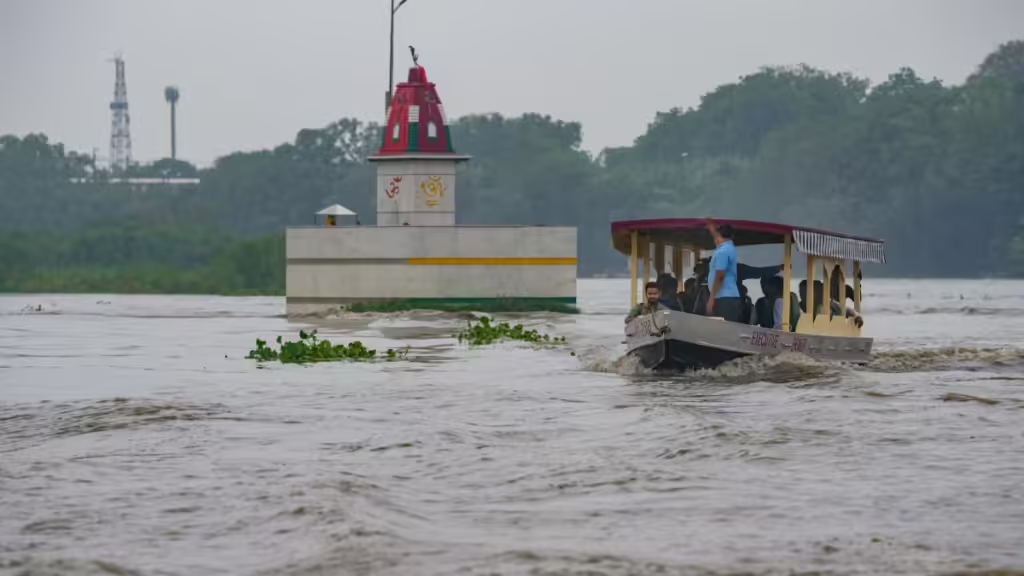
The unprecedented flooding was attributed to heavy rainfall in the upper catchment areas of Haryana, Uttarakhand, and Himachal Pradesh, combined with the massive discharge of water from the Hathnikund Barrage. The 2023 floods served as a stark reminder of the vulnerability of Delhi to the forces of nature and the importance of effective flood management.
The Role of Hathnikund Barrage in Flood Management:
The Hathnikund Barrage in Haryana plays a critical role in regulating the flow of water into the Yamuna River. The amount of water released from this barrage has a direct impact on the flood situation in Delhi. Currently, around 10,000 to 13,000 cusecs of water are being released from the barrage, which is being closely monitored by the authorities.
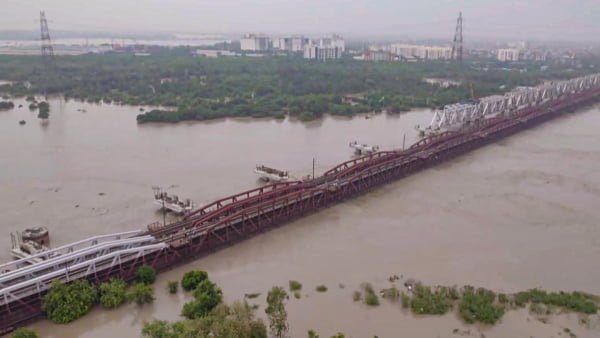
During the 2023 floods, the discharge from Hathnikund Barrage reached a staggering 3.59 lakh cusecs, contributing significantly to the flood levels in Delhi. To prevent a repeat of last year’s disaster, the Delhi government has developed a flood warning mechanism, where district-level committees are activated when water release exceeds 1 lakh cusecs.
Staying Alert and Informed:
As the flood situation near the Yamuna River in Delhi continues to develop, it is crucial for residents and authorities alike to remain alert and prepared. The lessons from past floods underscore the importance of timely interventions and effective flood management strategies.
While the current water levels are below the danger mark, the situation can change rapidly. Staying informed through official updates and adhering to safety guidelines will be key to navigating this challenging period.
For latest News Updates Click Here
